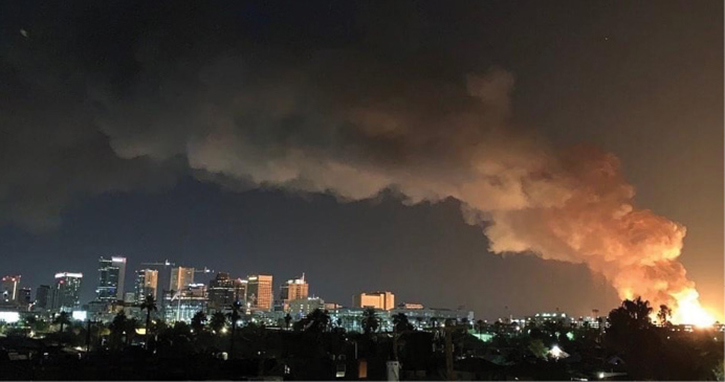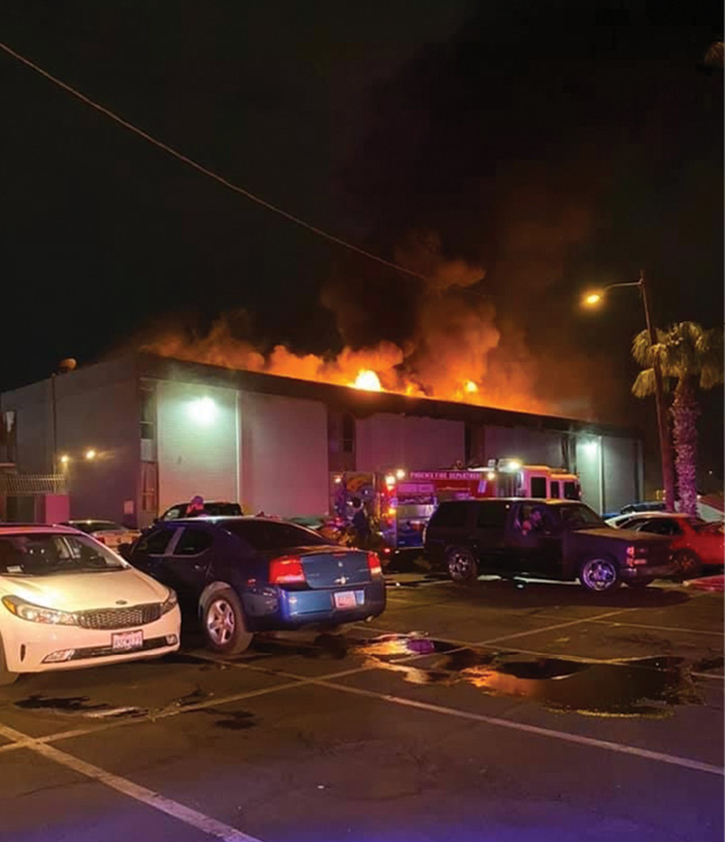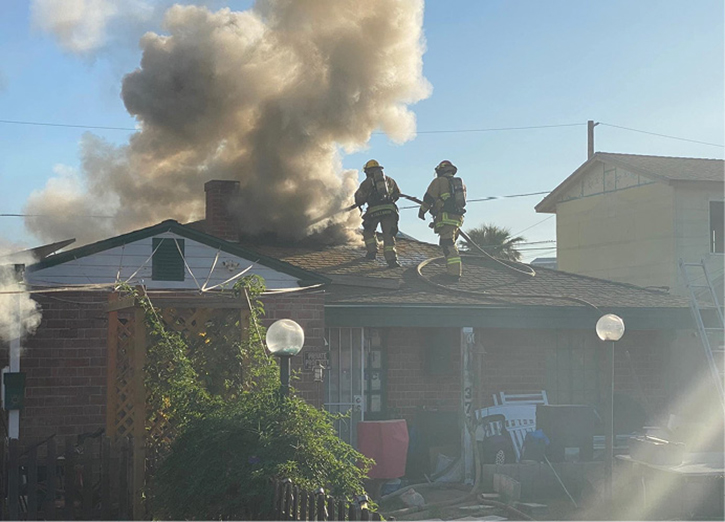By Tim Kreis
Many of us in the fire service would contend that the incident action plan (IAP) is the most important tool in the incident commander’s (IC’s) toolbox. You can’t expect safe and effective operations without a plan. The IAP is the foundation of the tactics and strategy the IC will use to control the incident. In some instances, the IC’s IAP is developed in his head and only retroactively drawn up on a tactical worksheet to record decisions already made or actions taken. When the IAP is developed in reverse of the proper order, operating personnel will lack a clear understanding and the IC will fail to consistently provide direction to the people who need it.
An IC without a plan will deploy units on the fireground reactively—i.e., he will delegate his command responsibility to the fire. Consequently, firefighters may be operating in offensive positions on a defensive fire, and the outcome of delegating command to the fire is that someone may get killed. Many of us may have operated on incidents where the fire was in command and we were lucky to survive it.
RELATED FIREFIGHTER TRAINING
The Importance of Having an Incident Action Plan
Why Size-Up, Incident Action Planning, and Communications Are Critical
Drill of the Week: Develop an Incident Action Plan
Conversely, the IC with an IAP is in command. This IC is operating proactively, assigning units and directing fireground operations according to the IAP. Great ICs have been developing and employing IAPs for years. The difference between successful and unsuccessful efforts to run a safe and effective fire is the IC’s ability to develop and execute a timely and effective plan. The IAP’s objective is to keep the IC in command. The IAP provides the IC with the methodical process or guide for determining the right tactics and strategy to use at the incident.

(1) On this incident, the IC was confronted with a very large building under construction that was well involved on arrival. The IAP was simple and well executed: protect adjacent exposures, extinguish the fire, and don’t get anyone hurt. Despite the enormous size of the fire, no surrounding structures were lost, no one was injured, and no fire apparatus were damaged. [Photos courtesy of the Phoenix (AZ) Fire Department.]
What Is an IAP?
The IAP is the IC’s formal plan and is connected to every one of his responsibilities as identified in the functions of command. The IAP must be simple to employ, concise, flexible, and easy for personnel to understand. It starts with size-up. At the moment that the IC has developed the IAP, what are the incident’s critical factors—the rescue, the property, the safety, and the customer characteristics? What is the forecast—i.e., how will the incident change as the IC’s plan is implemented? What outcome does the IC expect?
Strategy
Incident strategy must be clear on the fireground. Everyone on the fireground must know whether they’re in an offensive or a defensive firefight. The IAP must be based on the incident strategy, never the other way around. If the strategy is offensive, the IAP should drive the incident toward the tactical objectives. For example, on an apartment fire, the IAP must first address the timely completion of an “all clear” and “fire control.” On a defensive fire, the IAP should address protecting exposures and knocking down the main body of fire. Above all else, the IAP should never risk a firefighter’s life for what is already lost.
Tactics
What about tactics? Do we remove the victims from the fire or the fire from the victims? What about the exposures? These are some of the purest tactical decisions we face on the fireground. The IAP must provide the IC clarity on the tactics necessary to bring the situation under control. In addition, the IAP must account for incident organization: What sectors/divisions/groups will be established, and what are their objectives?
IAP Evaluation
The IC had better make sure his IAP is working. What is our routine to evaluate fireground progress? At what intervals do we evaluate the incident and our IAP? We know that the IAP must be evaluated and revised as things change on the fireground. Also, we know that the fireground is an extraordinarily dynamic place. The IAP must be evaluated and kept current. Evaluating the IAP is so critical that in the Phoenix (AZ) Fire Department, we have programmed IAP assessment intervals through elapsed time notifications to remind ICs.
When Does the IC Need an IAP?
The incident management system (IMS) never sleeps. It operates in relative perpetuity. The IC should have an IAP on every incident where command is established, formally or informally. In other words, the IC (i.e., the boss) must have an IAP on every incident; it must be evaluated for effectiveness and revised as the incident evolves. In many cases, the IAP doesn’t change much. Other times, the incident’s nature will necessitate several revisions because of the incident’s complexity, length, changing conditions, and so forth. Additionally, the IC must review and renew the IAP on the completion of each tactical benchmark. For example, the IC’s perspective and IAP should change a lot when “all clear” is accomplished.

(2) For this greater-alarm apartment fire in central Phoenix, the IC was challenged with a fast-moving fire spreading throughout an occupied apartment building, requiring a rapid size-up of the critical factors and decisive action.

(3) The IC must put his IAP in motion through the coordination of fireground action and tactics. In this photo, fireground efforts are well synchronized. Firefighters must coordinate work on the fireground such as search and fire attack; ventilation and water application; and, where appropriate, roof attack with interior efforts to address structural extension.
The IAP process is not limited to the first IC. The IAP needs to be evaluated, reviewed, and revised when command is transferred. One of the most important components of the ability of the IMS to ensure safe and effective fireground operations is the opportunity to solicit a new perspective. Reviewing the current IAP is a fundamental component of command transfer. If the fire officer assuming incident command does not agree with the IAP he inherited, he is obligated to make a change. Also, each person joining in the command team as the incident expands should assess the IAP; this is especially critical for the support officer and senior advisor.
Those serving as the support officers must continue to evaluate and sometimes challenge the IAP; this is critical and cannot be overstated. Support officers must have the organizational courage to speak up if they don’t agree with the IAP. In addition, senior advisors should carefully consider the IAP, which is initiated during response. Once the senior advisor arrives on scene, he must continue sizing up the incident and must be decisive as to whether he approves or disapproves of the current IAP. As part of the command team, the support officer and senior advisor have different roles and responsibilities. One thing they share is the duty to evaluate the IAP and to intervene when it is wrong.
The best ICs can anticipate a significant event, adjusting fireground operations and therefore successfully preventing bad outcomes. Benjamin Franklin’s famous quote, “An ounce of prevention is worth a pound of cure,” continues to serve the fire service very well. ICs should strive to operate ahead of the incident, although this is not always possible. One thing is for sure: The IAP must be evaluated after any significant event on the fireground.
Risk Management and the IAP Methodology
Firefighter safety is the reason for making an appropriately timed strategy decision (i.e., offensive or defensive). As firefighters, we are paid to protect lives and property. Firefighting is tough and dangerous work. Risk management is our compass, designed to aid the IC with his IAP. We use a standard risk management system as the basis of our strategy decisions. I expect not one person would argue in favor of sending firefighters into a fully involved building. Why? Because any lives or property is already lost. The Phoenix Fire Department’s standard risk management plan is as follows:
- We may risk our lives a lot, in a calculated manner, to protect savable lives.
- We may risk our lives a little, in a calculated manner, to protect savable property.
- We will not risk our lives at all for lives or property that is already lost.
The IAP and the Leader’s Intent
Leaders need to know where they are going if they expect to arrive there. The IAP provides the IC with the clarity needed to arrive at the incident destination. For example, we expect that firefighter safety is a perpetual component of the IC’s IAP. If safety and risk management are a part of the IC’s plan, then decisions made, and actions taken will reflect it. ICs share their strategic focus and IAP in a variety of ways. These include direct communication; deployment of resources; assignment of objectives; and, above all, the incident’s strategy. Operating without an IAP is negligence at the top of the organizational structure that jeopardizes firefighter safety. ICs must have an IAP before they assign and commit resources on the fireground.
The IAP is the foundation for fireground communication. When the IC has effectively sized up the incident and used that process to develop his IAP, the result is communication clarity to all operating and responding personnel. A well-established IAP enables the IC to consistently manage critical information (communications) with those who need it and need to share it.
The IAP is not intended to restrict the IC in making changes; rather, it helps the IC to make solid decisions at the speed of relevance within their responsibilities as defined by the functions of command. ICs must be careful to avoid slipping into a scenario where they are simply reacting to requests from sector officers or others and not processing that information within the context of the IAP.
Firefighters and Officers in the IAP
Clearly, successful fireground operations necessitate a lot more than a single IC with a great IAP. Firefighters, company officers, and sector officers all have critical roles and responsibilities within the IAP. They must be great critical thinkers and decisive in action, which necessitates a combination of training, experience, expertise, and determination to connect action to overall safe and effective fireground outcomes. These key players must pay close attention to the IC’s IAP so that their decisions and actions contribute to the IAP’s safe and timely execution on the fireground.
The Bottom Line
Determining a fitting strategy and the subsequent development and implementation of an appropriate IAP is why the IC exists. He must be decisive in deploying the necessary resources to complete the IAP. He must organize those resources so as to facilitate an appropriate span of control, taking advantage of the quality of the other players on the fireground. One of the prerequisites for safe and effective operations for the IC is having a correct IAP for the incident and knowing how to implement it.
The best ICs stay ahead of the incident and provide operating personnel with the clarity necessary to drive the incident toward a timely resolution. In addition, great ICs constantly evaluate the effectiveness of the IAP and are quick to change it before it’s too late. The bottom line is that the IAP is simply the IC’s plan, and it’s pretty darn important.
Tim Kreis has served with the Phoenix (AZ) Fire Department since 2002, assigned to the executive staff where he serves as the assistant chief of the Operations Division. He has a bachelor of science degree in fire administration from Columbia Southern University. Kreis served as an adjunct faculty member for the fire science programs at Phoenix College and Paradise Valley Community College and as an instructor at FDIC International.

